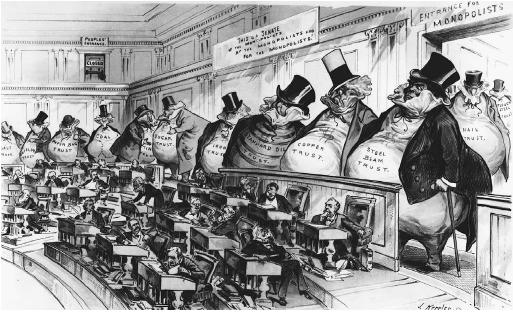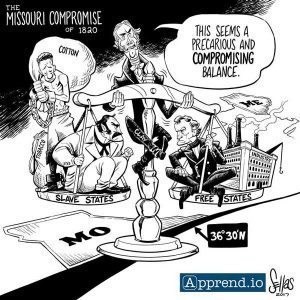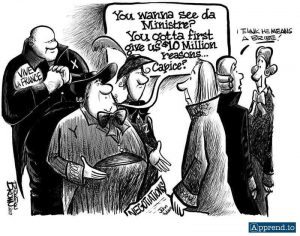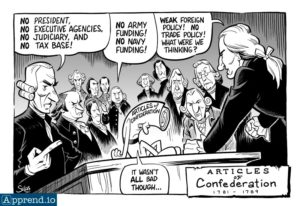what group was the sherman antitrust act interpreted by the courts to have growth of
The Sherman Anti-Trust Deed admin@apprend.io 2019-02-22T04:09:58+00:00
The Sherman Antitrust Act for APUSH

 About the Author: Warren Hierl taught Avant-garde Placement U.Due south. History for twenty-eight years. He has conducted 250+ AP US History workshops for teachers. He was a member of the committee that wrote the original Advanced Placement Social Studies Vertical Teams Guide and the Advanced Placement U.S. History Teachers Guide. He has been a reader, a table leader, and, for the by 8 years, the question leader on the DBQ at the AP U.S. History reading.
About the Author: Warren Hierl taught Avant-garde Placement U.Due south. History for twenty-eight years. He has conducted 250+ AP US History workshops for teachers. He was a member of the committee that wrote the original Advanced Placement Social Studies Vertical Teams Guide and the Advanced Placement U.S. History Teachers Guide. He has been a reader, a table leader, and, for the by 8 years, the question leader on the DBQ at the AP U.S. History reading.
In other words- Mr. Hierl grades the essays you will write for the APUSH exam.
The Sherman Antitrust Act
The Sherman Antitrust Human action was passed in 1890 and reflected a growing concern by the American public that the growth and expansion of monopolies were detrimental to the free market system of the United States and to its citizens in full general. The deed marked the first attempt by the federal government to command the growth of big concern. While its goal was to control the growth of monopolies that restrained trade, the vague wording of the act and its interpretation past a very conservative judiciary made the act relatively ineffective during the first decade of its life.
The act marked the offset attempt by the federal regime to control the growth of large business.
Creating a Monopoly by Trust
A unmarried lath of directors could dictate policy (including prices) for several companies for the purpose of monopolizing a market place and forcing other competitors out of business.
Trusts were a business structure by which stockholders in several companies transferred their shares to a single lath of trustees. With this control, a unmarried board of directors could dictate policy (including prices) for several companies for the purpose of monopolizing a market and forcing other competitors out of business. Thus, trusts gave the illusion to the public that various companies were competitive with each other when in fact they were controlled as one.
New Integrations
New business organisation structures such as vertical and horizontal integration gave trusts a competitive advantage. Vertical integration involved gaining command of all of the materials necessary for the production of a product. In the example of Carnegie Steel, that would mean gaining control of companies that mined iron ore, coal, and limestone, those that produced coke from coal, and those that transported those products to steel mills, to name a few. Vertical integration reduced a trust's expenses past eliminating the demand for middle men to brand a profit at each phase of product. Horizontal integration involved gaining control of all of the companies that produced a like product then that regardless of where a customer bought that product in the marketplace it was controlled past the same trust. Generally, monopolies were frowned upon considering of the fright that command of the market allowed them to increase prices and produce junior products. That was not necessarily the instance. Economies of calibration immune some trusts to produce goods faster and cheaper. Trusts did, however, make it much more hard for small businesses to proceeds a foothold in the complimentary enterprise system.
Vertical integration reduced a trust's expenses by eliminating the need for eye men to brand a turn a profit at each stage of production.
Big Business concern = Bad Concern?
The rapid growth of trusts and the subsequent development of monopolies during the Golden Historic period led to a growing phone call for the regulation of big business by the federal government. While the Interstate Commerce Act of 1887 represented the first try by the federal regime to regulate business organization practices, the Sherman Antitrust Deed was the initial endeavour at regulating trusts that, in the public mind, had grown out of command. There was a growing conventionalities that big business controlled the federal regime and encouraged such policies every bit a high protective tariff which resulted in higher prices for consumers and widened the gap in income distribution. There was also the belief that business control of government retarded the ability of workingmen to raise wages and ensure better working conditions as the federal government frequently intervened in labor disputes on the side of big business organisation.
The Sherman Antitrust Act was the initial attempt at regulating trusts that, in the public mind, had grown out of control.
Ruthless business organization tactics such as those afterwards chronicled by Ida Tarbell in the History of Standard Oil (as one historian noted, Rockefeller bankrupt no laws, but a lot of laws were passed considering of him) eliminated small concern contest and put consumers at risk of cost gouging. Business mechanisms, such every bit vertical and horizontal integration, aided in the domination of the market by select companies and in the exploitation of labor. Equally well, the arrogance of sure robber barons such as those expressed past Jay Gould, "I can hire half of the working class to kill off the other half of the working class," or past Cornelius Vanderbilt, "Law! What do I care near the law? Ain't I got the power?" repulsed the American public and intensified calls for regulation. In the end, the Sherman Antitrust Deed passed Congress by a vote of 51-1 in the Senate and 240-0 in the House of Representatives.
Business mechanisms, such every bit vertical and horizontal integration, aided in the domination of the market by select companies and in the exploitation of labor.
The Kickoff Antitrust Act
The Sherman Antitrust Human action fabricated whatever combination "in restraint of trade or commerce among the several states, or with foreign nations" illegal. Under the provisions of the act, the federal government could bring suit against the combination and deliquesce information technology, that is, force it to sell off some of the companies it controlled. Individuals or companies who suffered amercement could sue for triple the amount of those damages.
Many politicians voted for the Act because they knew it would be difficult to enforce.
While the Sherman Antitrust Human activity was designed to quiet public bedlam against monopolies, many politicians voted for it because they knew information technology would be difficult to enforce. That was borne out in the case of the Us five. E.C. Knight Company (1895). The instance involved the American Saccharide Refining Company, which controlled 98% of all the saccharide refining in the Usa. The Supreme Court ruled that manufacturing did not constitute commerce and, therefore, the visitor was not in violation of the antitrust statute. The practical effect of this decision was to make the Sherman Antitrust Act well-nigh unenforceable. In many ways, the defeat in the Eastward.C. Knight example reflected the laissez-faire attitude the government held toward the regulation of big business. Following the ruling in the Knight instance, Richard Olney, the Attorney General of the United states who was charged with prosecuting the example, remarked,
"You volition observe that the government has been defeated in the Supreme Court on the trust question. I always supposed it would be and have taken the responsibility of not prosecuting under a constabulary I believed to be no good."
But xviii antitrust cases were prosecuted past the government prior to 1901 (the government losing vii out of the first eight) while over 180 trusts were formed between 1899 and 1901.
The government was more successful in using the Sherman Antitrust Act against labor unions. Unions and strikes were often constitute to exist conspiracies in restraint of trade, and courts issued injunctions against hit workers and oftentimes jailed labor leaders under the provisions of the Sherman Act. With the turn of the century, still, the progressive era ushered in a different mental attitude toward trusts and more vigorous enforcement of the Sherman Antitrust Act ensued.
With the turn of the century, even so, the progressive era ushered in a unlike attitude toward trusts and more vigorous enforcement of the Sherman Antitrust Act ensued.
The Trust Buster
The assassination of William McKinley elevated Theodore Roosevelt to the White House which signaled a more aggressive policy toward breaking upwards trusts. In part that was due to a significant increment in, what Roosevelt termed, "muckraking," magazine articles exposing the ruthless business practices in eliminating competition, governmental corruption, and lack of concern for the public safety. Roosevelt distinguished between "good trusts" (ones that served the public interest) and "bad trusts" (ones that exploited the American people). His conclusion and success in breaking up "bad trusts" led to his nickname of the "trust buster."
In 1904 the prosecution and breakup of the Northern Securities Company (a railroad trust) under the provisions of the Sherman Antitrust Human activity signaled Roosevelt's intention of more than aggressively utilizing the provisions of the Sherman Act to deliquesce trusts. Ultimately, under the Roosevelt assistants (which spanned a piddling over seven years) 43 trusts were dissolved. The federal regime under William Howard Taft, Roosevelt's successor, broke up more 80 trusts during his 4-year tenure, including Standard Oil and American Tobacco. The reasons for this dramatic turnaround in trust prosecution largely stalk from a more pronounced public opposition to trusts (partially fueled by muckraker accounts of the abuses of big business), presidents who were more willing to establish a balance betwixt a capitalist economy and the social welfare needs of the American people, and a more sympathetic Supreme Court.
The federal government under William Howard Taft, Roosevelt's successor, bankrupt up more than 80 trusts during his four-year tenure, including Standard Oil and American Tobacco.
The Wilson Administration, elected in 1912, continued and fifty-fifty expanded the trust busting power of the U.S. regime. Prosecutions nether the Sherman Deed continued, simply boosted legislation was passed which strengthened the human action. In 1914 the Clayton Antitrust Human action was passed to analyze and strengthen the Sherman Antitrust Act. Among other things, the Clayton Human action exempted labor unions and farm cooperatives from prosecution and express the power of courts to issue injunctions in labor disputes, rectifying perversions of the original intent of the Sherman Antitrust Act. Under the Wilson Assistants, the Federal Trade Committee was created to regulate unfair business practices not covered under the Sherman Antitrust Act.
Trust are Bad… Until We Need Them
World War I largely put a halt to regime attempts to control monopolies.
Despite these gains, World War I largely put a halt to government attempts to control monopolies. As U.South. involvement in the war became more likely and "preparedness" became the order of the twenty-four hours, the government was more than sympathetic to the economies of scale and the efficiencies that monopolies brought to the table. Something of a partnership betwixt authorities and big concern emerged, similar to the relationship that existed during the Gilded Age.
With the ballot of Warren G. Harding in 1920, a dominantly pro-business attitude was reinstated in the federal regime. Harding's promise of a "render to normalcy" in truth meant a return to the Gilded Historic period mental attitude of a laissez-faire approach to business regulation reinforced by a sympathetic Supreme Court. Calvin Coolidge exemplified this attitude in statements such as, "The business of America is business," and "He who builds a factory builds a temple, and he who works in that location worships at that place…"
Harding'south promise of a "return to normalcy" in truth meant a render to the Gold Age attitude of a laissez-faire approach to business regulation
Conclusion
The Sherman Antitrust Act represents the first attempt past the federal government to regulate large business organisation.
The Sherman Antitrust Act represents the first endeavor by the federal government to regulate big concern. It remained the basis for antitrust prosecutions throughout the twentieth and into the twenty-start centuries (antitrust prosecution of Microsoft in 1998 was based on violations of the provisions of the Sherman Antitrust Human activity). Effective enforcement or non-enforcement of the act has largely been dependent on the disposition of the presidential administrations and the Supreme Court toward business regulation. The Sherman Antitrust Constabulary reinforced and expanded the precedent gear up by the Interstate Commerce Human activity that the regulation of large business is a legitimate function of the federal government.
Keep Learning!
The Missouri Compromise

Bacon'southward Rebellion

Mercantilism

The XYZ Thing

Articles of Confederation

Source: https://apprend.io/apush/period-6/the-sherman-anti-trust-act/
0 Response to "what group was the sherman antitrust act interpreted by the courts to have growth of"
Post a Comment